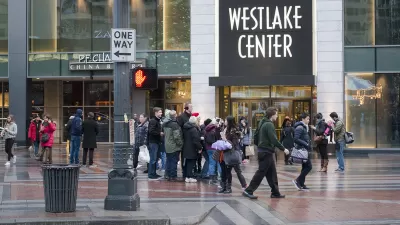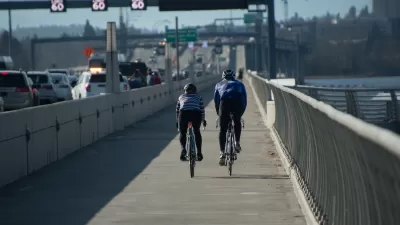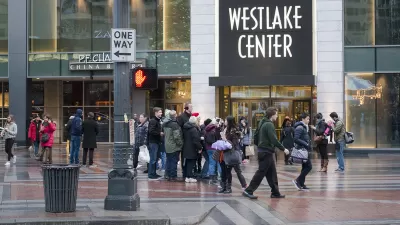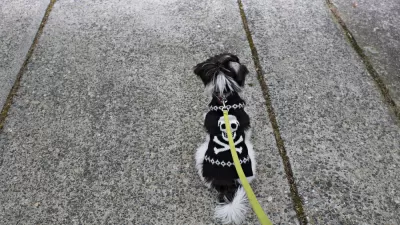A status update of the Seattle Pedestrian Master Plan leaves a writer wondering if the backlog of pedestrian infrastructure maintenance will grow while only a few planned projects get built.

Ryan Packer writes a review of the current status of the Pedestrian Master Plan (PMP) adopted by the city of Seattle in 2009, "to determine how to approach the issue of maintaining, improving, and expanding the pedestrian network…" According to Packer, the key takeaway offered by the plan is a statement of prioritization: which pedestrian improvements get done first.
Along those lines, the plan distinguishes a Priority Investment Network (PIN), which includes "adjacency to the priority transit network, close walksheds to schools, streets where sidewalks are currently missing, and streets where there are high rates of collisions involving pedestrians."
It's the question of funding that makes Packer question the real ability of the plan to prioritize anything at all. Many of the projects in the PMP relies on the Move Seattle levy. As Packer shows, referencing the PMP directly, "the levy would fund 250 blocks of new sidewalks, and the identified need that only include arterials within the priority network is more than double that."
These facts lead Packer to the conclusion that "[i]t’s conceivable that in five or six years, when the time comes to redevelop the Pedestrian Master Plan, that the need will grow even further to the degree that the priority investment network needs a further subcategory in order to prioritize investments in it." Moreover, Packer wonders about the sincerity of city officials claiming to target a Vision Zero agenda of eliminating traffic fatalities by 2030 "when our most robust transportation levy in decades only provides for spot improvements on 12 to 15 corridors…"
FULL STORY: Pedestrian Master Plan Update

Planetizen Federal Action Tracker
A weekly monitor of how Trump’s orders and actions are impacting planners and planning in America.

Maui's Vacation Rental Debate Turns Ugly
Verbal attacks, misinformation campaigns and fistfights plague a high-stakes debate to convert thousands of vacation rentals into long-term housing.

San Francisco Suspends Traffic Calming Amidst Record Deaths
Citing “a challenging fiscal landscape,” the city will cease the program on the heels of 42 traffic deaths, including 24 pedestrians.

Defunct Pittsburgh Power Plant to Become Residential Tower
A decommissioned steam heat plant will be redeveloped into almost 100 affordable housing units.

Trump Prompts Restructuring of Transportation Research Board in “Unprecedented Overreach”
The TRB has eliminated more than half of its committees including those focused on climate, equity, and cities.

Amtrak Rolls Out New Orleans to Alabama “Mardi Gras” Train
The new service will operate morning and evening departures between Mobile and New Orleans.
Urban Design for Planners 1: Software Tools
This six-course series explores essential urban design concepts using open source software and equips planners with the tools they need to participate fully in the urban design process.
Planning for Universal Design
Learn the tools for implementing Universal Design in planning regulations.
Heyer Gruel & Associates PA
JM Goldson LLC
Custer County Colorado
City of Camden Redevelopment Agency
City of Astoria
Transportation Research & Education Center (TREC) at Portland State University
Jefferson Parish Government
Camden Redevelopment Agency
City of Claremont





























